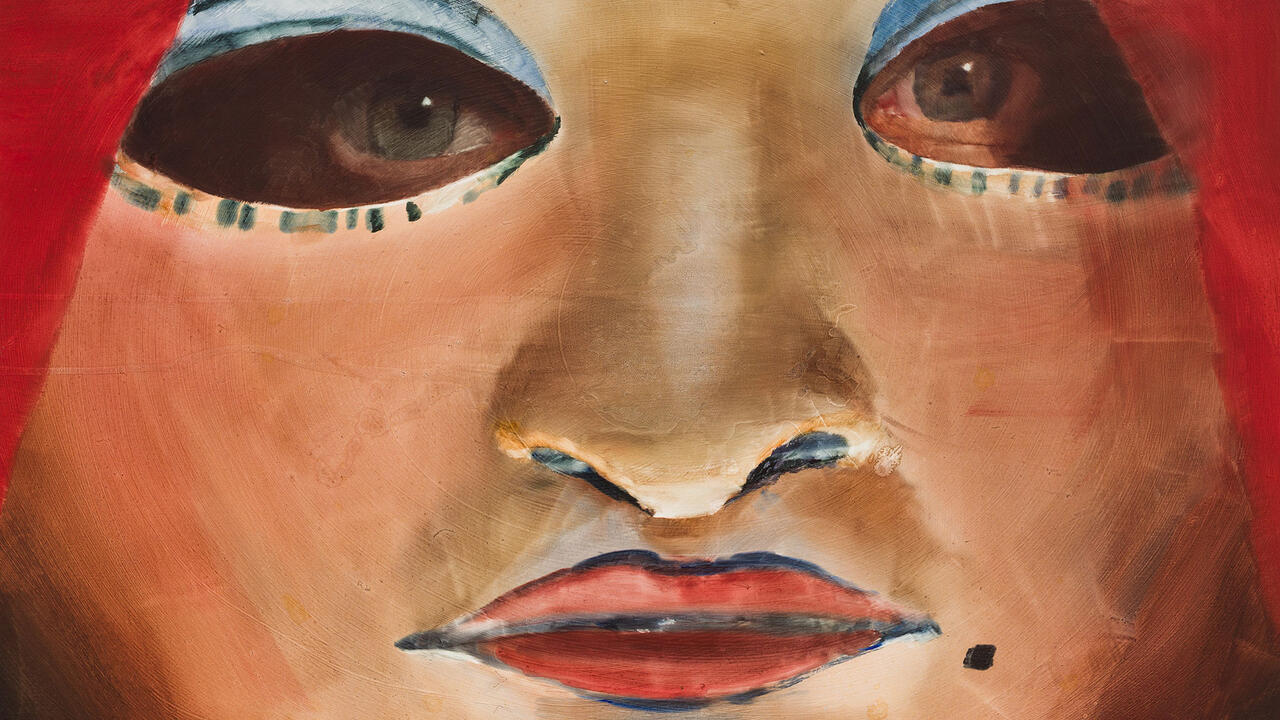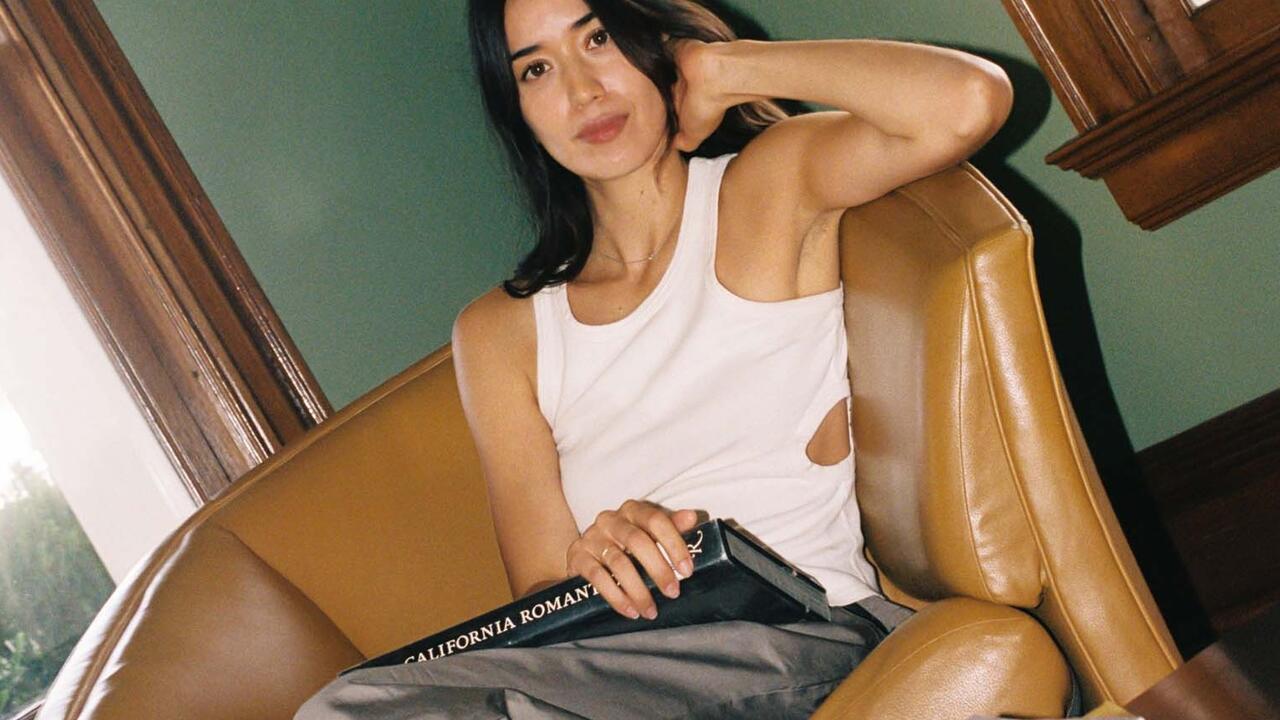Albert Oehlen
mumok
mumok

In the early 1980s, a heyday of culturally sanctioned irony, the return to painting facilitated remarkably illusion-free answers to questions that no longer really needed asking. Albert Oehlen was one artist who took this approach. Oehlen used traditional oppositions such as flatness/volume, colour/line, figure/ground, abstraction/figuration to arrive at pictures of comic succinctness. Oehlen’s parodic figurations from the early ’80s, then, took their lead from the inversion of a no less parodic abstraction. How this inversion was performed and what exactly was being parodied is shown, for example,in the earliest piece, Ofen I (Oven I, 1982), of this retrospective exhibition titled simply Malerei (Painting). The titular oven only really consists of outlines, exposing a background of crudely rendered abstraction. The oven is surrounded by tiled or brick walls that allude to the hyper-German, greyish brown spatial metaphors of Anselm Kiefer’s ‘history paintings’ from the mid-1970s. The humour here is augmented by the way Oehlen’s parody on Kiefer’s lofty tone also helps to empty his own painterly gestures; the same goes for the white lines of pseudo-perspective that run through the picture, connecting the edges of actual mirror tiles stuck onto the canvas. Then again, black, greyish brown and muted orange are, in a way, also the colours of analytic cubism – thus completing one of Oehlen’s typical toolkits for de- or re-coding a painterly sequence.
For such a retrospective exhibition, it would presumably be legitimate to focus on stations of Oehlen’s personal artistic development. The first striking fact here is that by the end of the ‘80s, Oehlen had abandoned the quasi-obligatory figuration of that decade’s ‘return to painting’ in favour of abstraction. But certain constants still remained, such as streaky swirls, strangely snagged lines or abruptly applied squiggles. A particular fast, unwieldy and somehow deliberately ugly quality also reoccurs, whereas the greyish brown mustiness vanished from Oehlen’s pictures completely around 1990. Instead, in works like Der Zoo von Brooklyn (Brooklyn Zoo, 1995) and Spielgrade (Degrees of Play, 1996), a colourist asserts himself, even making use of fruity and flowery shades.
During the ‘90s, when Oehlen tended towards dense, all-over picture surfaces, he simultaneously pursued another approach with huge black-and-white prints on canvas. In such works of line-based abstraction, composed using arbitrary graphic design software, an emptying of the picture surface takes place (Easter Nudes, 1996). A decade later, the same phenomenon was palpable in his paintings. There are also the sharply snapped off or clumsily connected lines and strangely body-like forms recalling staffs or clubs. Now, however, not only is the number of painterly events reduced, but the densely covered areas are also more strongly isolated from one another, developing more of a local intensity, although on a Gagosianesque, three- or four-metre wide scale.

Then again, Oehlen’s shift from neo-figurative to abstract painting did not take place quite as narrowly as this brief account suggests. For one thing, Oehlen had a sustained interest in collage – an interest affirmed, from 2009 onward, in accordingly huge formats. For these works on paper, he cut up advertising posters – often the garish red and yellow kind used to promote bargains in supermarkets – into silhouettes, combining two or three per picture (I 0, 2009, I 22, 2012).
From 2010, sections of advertising posters began appearing in his paintings. Pasted onto primed canvas, they introduced figurations, bright colours and an architectural dimension – things which the painting itself no longer needed to concern itself with. If Oehlen’s pictures of the ’80s amounted to an inversion of figuration and abstraction, then what takes place in this later mixing of collage and painting is a movement of mutual obliteration. On the one hand, the presence of the non-painterly element levels any claims to exclusivity on the part of painting. On the other, the painting process takes its cue from these strips of paper, before largely covering them up again. Here again, it is clear that the logic of Oehlen’s image production rests on his handling of dissociated parts.
His most recent pictures go more in the direction of Informel. Of course, this particular brand of Informel does not believe itself capable of elevating random gestures or improvised disorderliness to the status of truth procedures. But neither does Oehlen use this repertoire in a parodic way. Instead, the references now seem to be intrinsic, tied to forms and preferences that have evolved over long years of painterly practice. The often deliberately gauche marks have become something like properties. As a result, their dryness no longer feels merely reflexive and static, but positively elegant.
The exhibition catalogue collects some of this rigidity, too, though in a different way. For one thing, there is Heimo Zobernig’s ambitious but failed graphic design, attempting a layout analogous to Oehlen’s stylistic approach. Also unconventional was the inclusion of only interviews. In any case, these conversations cause a retrospective stir all of their own – especially Hal Foster’s, which introduces a predictably dogmatic factor. Foster was invited as a representative of October, the magazine that fought a bitter battle in the early 1980s against the kind of (mainly German) painting generally known as ‘neo-expressionist’. One might think that after all these years, a revision of crude misjudgements would have been timely and possible. But not only does Foster miss this opportunity, he actually propounds, even in this unlikely context, his Adorno-steeled views concerning (the obsoleteness of) painting.
Perhaps today it really is time for some renewed Platonic rigor in determining the function of art or in thinking about its historical objectives. But even this ought not to rule out the realization that since 1980, if not before, artistic production can no longer be positioned historically, as Foster would like. Today, it must face the arduous task of trying to historicize at all on the basis of now-impossible historical vectors, and trying to somehow get by artistically on this level. Traces of paint applied to canvas with a brush are (retrospectively speaking: were) also involved in this particular critical state – one that includes, of course, the paintings of Albert Oehlen.
Translated by Nicholas Grindell














